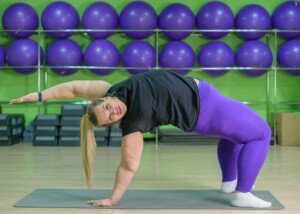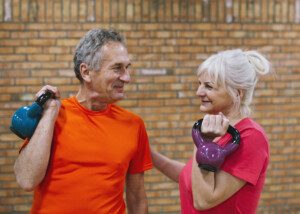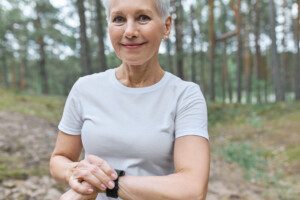
Feeling “old” because you’re retired? Here’s how to reverse that. This goes for those who’ve retired early as well.
I’m middle age, retired early (meaning, I no longer have to work) and feel like I’m 25.
I’ve recently taken up rock-wall climbing after many years away from it, and my body is re-assimilating to this cool AF sport at a respectable pace.
Do not let the word “retirement” trick you into thinking that leaving the workforce means you’re old.
If anything, kissing goodbye to the daily meat-grind should make you feel younger and recharged, because now, you have freedom facing you, rather than Boss, deadlines, performance evaluations, workplace hostility and coworker backstabbing, the daily commute and all the other negatives that go along with this ball-and-chain lifestyle.
I see retirement as a gateway to revisiting a childlike existence. For example, on a whim I can put on my inline skates and go for a spin around the neighborhood and wave to kids who are doing the same!
Retirement means you now have time to “be a kid again” and do so many things to perk up your body and spirit.
What can be more youth-generating than this? Retirement should be viewed as the antithesis of getting or feeling old.
Five Ways to Take Back Your Youth During Retirement
#1…Join a gym.
The health club industry is highly competitive. There are monthly rates for all budgets, and people of senior age can get a discount at some centers.
However, joining a gym shouldn’t mean using it just to bob around in the pool holding Styrofoam bendy tubes. Get out on the floor and start lifting weights.
Sit on any one of a number of machines, grab the handles and start pushing and pulling.
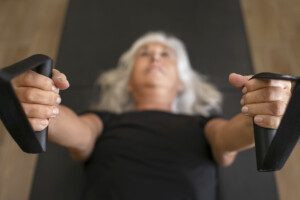
Freepik
The resistance goes as low as 10 to 15 pounds, and you can start out very lightly to ease into the realm of strength training.
I strongly urge you to hire a personal trainer for at least two sessions. I see so very many people of older age incorrectly using equipment. This can lead to injuries.
Exercise is actually rocket science to some people. I cringe when I observe older men and women who don’t know what in the dickens they’re doing.
You should carefully shop around for a compatible trainer. Watch how the trainers at your gym interact and work with their clients. This will help you with your choice.
#2…Do weightlifting exercises that mimic everyday movements.
Not all of your exercises need to mimic the movements of everyday living, but many should.
The following exercises have significant carryover to the activities of daily living (ADL).
• Deadlift. Carries over to picking weighty items off the floor and setting them back down; makes lifting the dog, grandchild or weak aging parent (out of bed, out of bathtub, into a car, etc.) a lot easier. Strengthens grip.
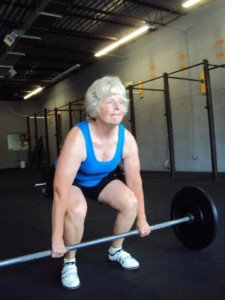
Deadlift
• Squat. This can be done a variety of ways as shown below. Strong hips and legs will make it easy to get in and out of cars, out of deep chairs, up from the floor or ground after doing something while on your knees, and so many other ADL.
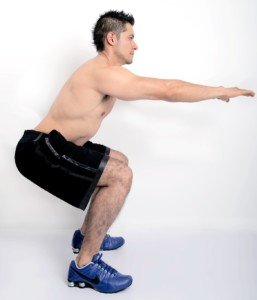
Bodyweight squat
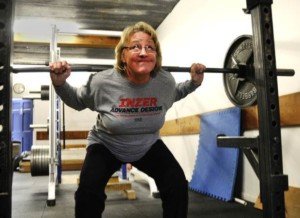
Back squat
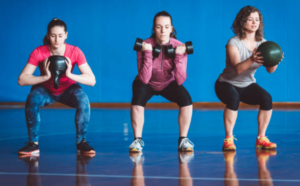
Weighted squat
• Standard farmer walk. Walk around for several minutes while holding weights in each hand, arms straight at your sides.
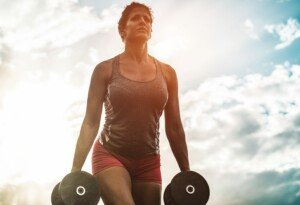
Farmer’s walk. Shutterstock/DisobeyArt
This carries over to any time you’re walking around holding something weighty such as your loaded bowling bag, luggage, groceries, paint cans, etc.
• Overhead press. With a barbell, dumbbells or kettlebells, stand while pressing the weights overhead. Has serious carryover to placing things on a high shelf as well as retrieving them.
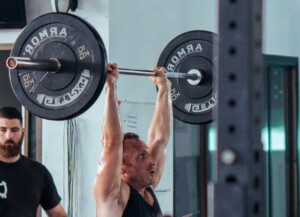
Overhead press. Pexels/Gleb Krasnoborov
• Seated cable row. You’ll be pleasantly surprised at how much this will improve your ability to walk a dog that likes to pull, among its many carryovers.
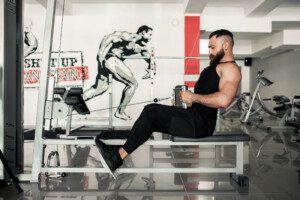
Seated row. Freepik/senivpetro
• Stationary lunge. Up and down, up and down, will enable you to effortlessly get up from the floor.
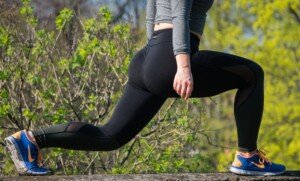
Stationary lunge
• Kettlebell swing. This will make picking up weighted objects easier. It will also carry over to shoveling snow and raking leaves.
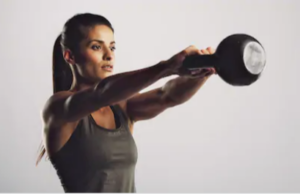
Kettlebell swing. Shuttersotck/Jacob Lund
#3…Take yoga classes.
Though yoga involves standing or sitting in one spot, no weights and no energetic movements such as in a Zumba or step aerobics class … don’t let that fool you.
Yoga has serious crossover to ADL. It will also relieve a lot of stiffness and aches, and improve mobility.
Positions or flows that are too difficult can be modified to ANY level.
#4…What did you always want to do as a child?
Make a list, then methodically go through the list, even if it’s something like riding a merry-go-round, sliding down a snow hill on a sled or taking up coloring.
Maybe it was to learn a musical instrument. What’s stopping you now? Maybe it’s horseback riding or ice skating. Go for it.
In fact, if you want to dance through sprinklers, then do it. Any older adults who look at you weird are probably irked that they don’t have the spring in their legs to do the same.
#5…Eat healthfully and do aerobic exercise.

Freepik
Limit processed foods. Make a point to eat more fruits and vegetables. You really ARE what you eat.
You now have time to learn how to make home cooked meals with all-natural ingredients.
Do 30 minutes of nonstop aerobic activity at least twice a week (45 minutes are even better): fast arm-pumping walks, hikes, aerobics classes, jogging, whatever gets your heart rate up and makes you feel outside your comfort zone.
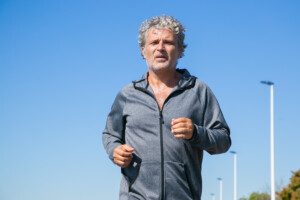
Freepik/pch.vector
However, listen to your body as well. Don’t go running if it hurts your knees. Don’t try rock-wall climbing if you have a bad shoulder.
Aerobic exercise is not built into the ADL. Don’t assume that housework is all you need for aerobic activity.
 Lorra Garrick is a former personal trainer certified through the American Council on Exercise. At Bally Total Fitness she trained women and men of all ages for fat loss, muscle building, fitness and improved health.
Lorra Garrick is a former personal trainer certified through the American Council on Exercise. At Bally Total Fitness she trained women and men of all ages for fat loss, muscle building, fitness and improved health.
.


